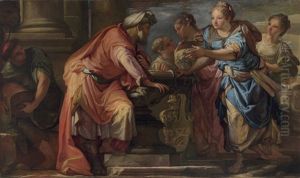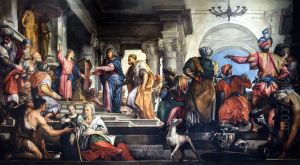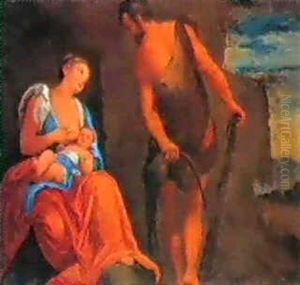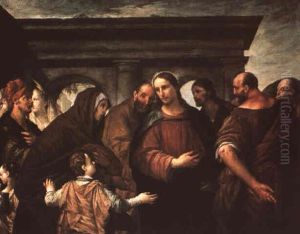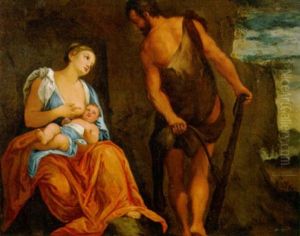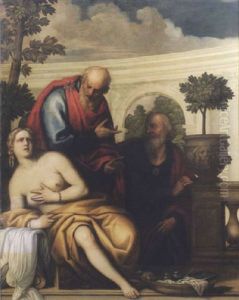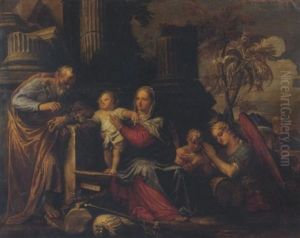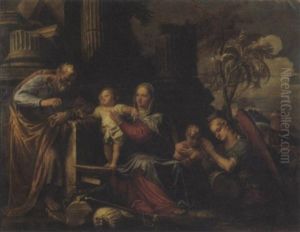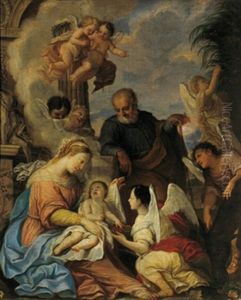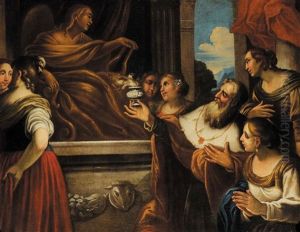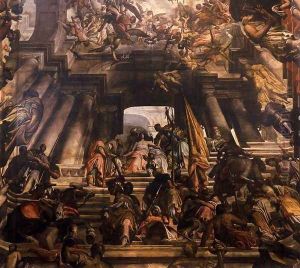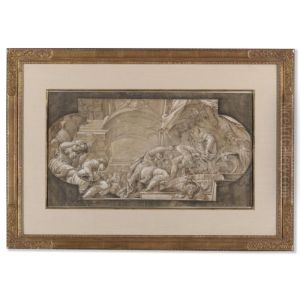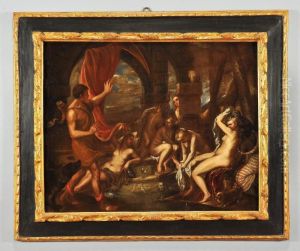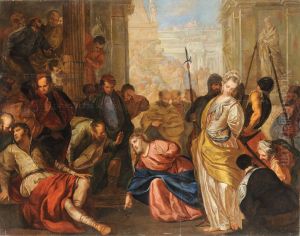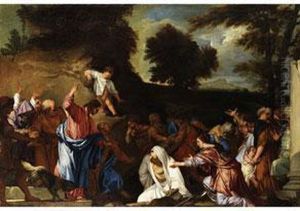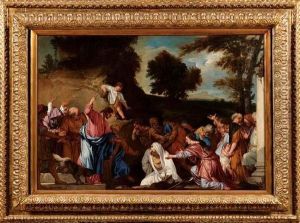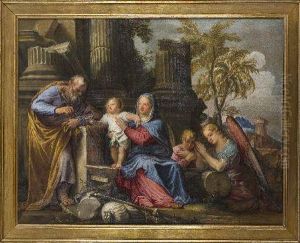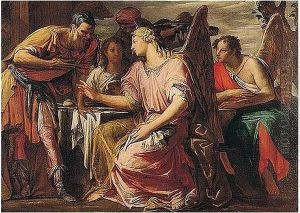Giovanni Antonio Fumiani Paintings
Giovanni Antonio Fumiani was an Italian painter who was born in 1645 in Venice. He played a significant role in the Venetian Baroque movement, which was known for its vibrant color, dramatic use of light, and bold sense of movement. Fumiani's early life and training are not well-documented, but it is believed that he may have been a pupil of the painter Francesco Ruschi.
Throughout his career, Fumiani undertook various commissions for religious and historical paintings. He was particularly adept at creating large-scale frescoes, a skill that led him to work on numerous ceilings and walls in churches and palaces throughout Venice and its territories. One of Fumiani's most celebrated works is the ceiling fresco in the Church of San Pantalon in Venice, which depicts the Martyrdom and Apotheosis of San Pantalon. This monumental work, completed over a period of almost twenty-four years (from 1680 to 1704), showcases his mastery of perspective and narrative.
Fumiani's style is characterized by dynamic compositions, a rich palette, and an ability to convey emotion and drama. His work reflects the influence of other Venetian masters, such as Paolo Veronese and Jacopo Tintoretto, yet Fumiani also incorporated elements of the emerging Rococo style, which can be seen in his lighter coloration and more playful themes in his later work.
Despite his contributions to the Venetian art scene, Fumiani did not achieve the same lasting fame as some of his contemporaries. His works were sometimes criticized for their perceived lack of clarity and over-embellishment. Yet, in recent years, there has been a renewed interest in his oeuvre, and his paintings are now recognized for their innovation and artistic merit.
Giovanni Antonio Fumiani died in 1710 in Venice. His legacy lives on in the frescoes and canvases that continue to adorn the walls and ceilings of Venetian edifices, as well as in public and private collections around the world. His work remains an important example of the grandeur and complexity of Baroque art in Italy.
